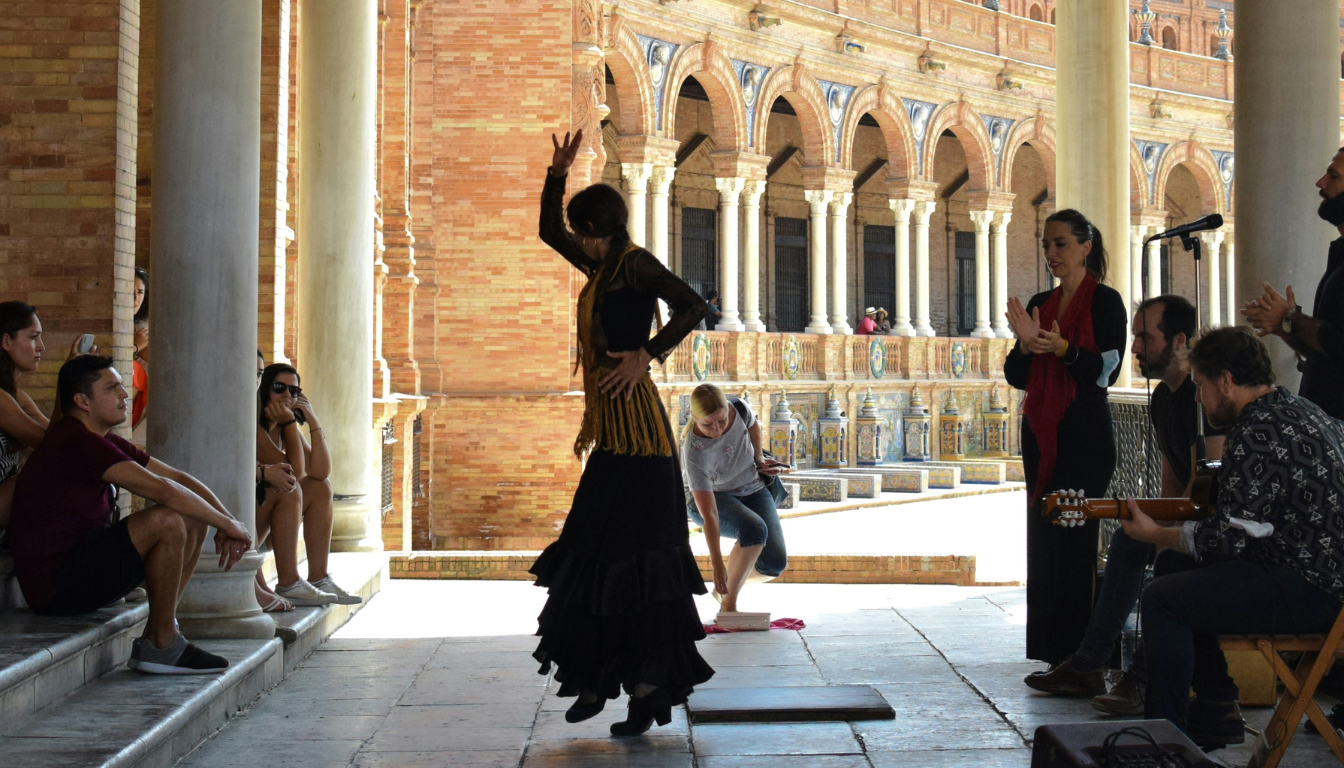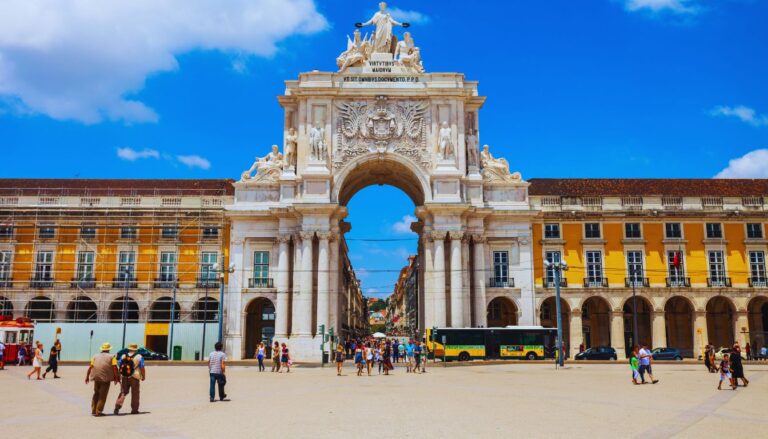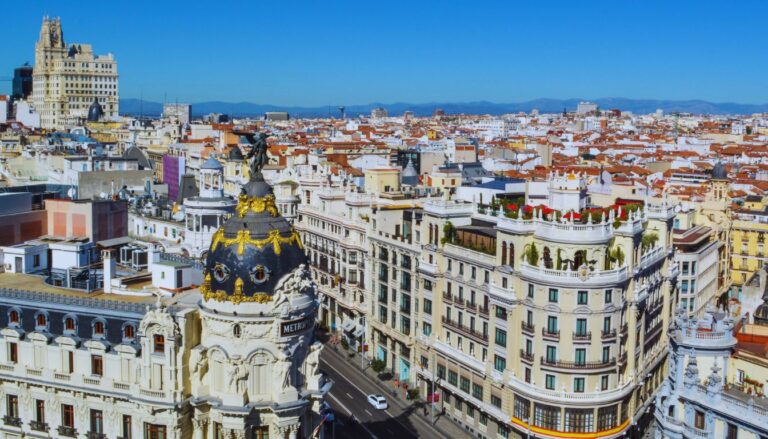In the sun-drenched streets of southern Spain, where the scent of orange blossoms mingles with the aroma of sizzling tapas, there’s a rhythm that seems to pulse through the very stones of ancient cities. This is the heartbeat of Andalusia, the soul-stirring art of flamenco. More than just a dance or a style of music, flamenco is a way of life, a passionate expression of the joys and sorrows of the human experience.
Flamenco is a complex art form that combines soulful singing, intricate guitar playing, expressive dance, and rhythmic hand clapping. It’s a testament to the rich cultural tapestry of Andalusia, woven from threads of Gypsy, Moorish, Jewish, and Spanish influences. In this article, we’ll explore the depths of flamenco, from its mysterious origins to its place in the modern world, uncovering the passion and artistry that have made it a global phenomenon.
Table of Contents
The Origins of Flamenco: A Melting Pot of Cultures
The exact origins of flamenco are shrouded in mystery, much like the misty mountains of Andalusia at dawn. What we do know is that this art form emerged in the region of Andalusia, Spain, sometime between the 9th and 14th centuries. It’s a product of the unique cultural fusion that occurred in this part of the Iberian Peninsula over centuries.
Flamenco’s roots can be traced to several influences:
- Moorish culture: The 700-year Moorish occupation of Spain left an indelible mark on the music and ornamentation of flamenco.
- Jewish traditions: The melodic structures of some flamenco styles show similarities to ancient Synagogue chants.
- Gypsy influence: The Roma people, who arrived in Spain in the 15th century, are credited with shaping much of flamenco’s passionate and improvisational nature.
- Andalusian folk music: The native musical traditions of southern Spain provided the foundation upon which these other influences built.
This melting pot of cultures created an art form that is uniquely Andalusian, yet universal in its appeal. Flamenco speaks to the human condition, expressing deep emotions that resonate across cultural boundaries.
The Three Pillars of Flamenco: Cante, Baile, and Toque
Flamenco is built on three fundamental elements, often referred to as the “holy trinity” of the art form:
- Cante (Singing): The vocal component of flamenco, ranging from deep, guttural expressions to lighter, more melodic styles.
- Baile (Dance): The expressive and passionate dance, characterized by intricate footwork, dramatic poses, and emotive hand and arm movements.
- Toque (Guitar Playing): The instrumental backbone of flamenco, providing both rhythm and melody.
These three elements work together in a delicate balance, each supporting and enhancing the others. A fourth element, palmas (rhythmic hand clapping), often accompanies these core components, adding to the complex rhythms of flamenco.
Cante Jondo: The Deep Song of Flamenco
At the heart of flamenco lies the cante jondo, or “deep song.” This is the most serious and profound style of flamenco singing, often dealing with themes of love, death, anguish, and religious faith. The cante jondo is characterized by its intensity, use of microtones, and emotional depth.
Singers of cante jondo don’t just perform the songs; they seem to embody them. Their voices, often raw and weathered, convey a lifetime of experiences in a single phrase. The lyrics, while important, are secondary to the emotion conveyed through the voice itself. It’s not uncommon for listeners to be moved to tears by a powerful rendition of cante jondo, even if they don’t understand the words.
Some of the most revered forms of cante jondo include:
- Siguiriyas: A slow, intense style often dealing with themes of death and loss.
- Soleares: Known as the “mother of flamenco,” this style expresses solitude and melancholy.
- Martinetes: Originating from the rhythm of blacksmiths’ hammers, this style is sung without guitar accompaniment.
The Art of Flamenco Dance: Passion in Motion
Flamenco dance, or baile, is perhaps the most visually striking element of the art form. It’s a dance of passion, precision, and pride, where every movement tells a story. Flamenco dancers, known as bailaores (male) or bailaoras (female), use their entire bodies as instruments of expression.
Key elements of flamenco dance include:
- Zapateado: The intricate footwork that creates percussive rhythms.
- Braceo: Fluid arm movements that complement the body’s motion.
- Palmas: Rhythmic hand clapping that adds to the overall compás (rhythm).
- Taconeo: Heel striking, which creates sharp, staccato sounds.
- Desplante: A dramatic pause or pose, often used to punctuate a section of dance.
Flamenco dancers must have incredible control over their bodies, able to move with both power and delicacy. The dance is a conversation between the bailaor/a and the music, with each responding to and inspiring the other.
Flamenco Guitar: The Strings of Emotion

The flamenco guitar, or toque, provides both the harmonic foundation and much of the rhythmic drive in flamenco music. Flamenco guitar playing is characterized by its percussive technique, fast picados (single-note runs), and the use of complex rhythmic patterns.
Some key techniques in flamenco guitar include:
- Rasgueado: A strumming technique using outward finger strokes to create a rapid, crisp sound.
- Alzapúa: A thumb technique that combines upward and downward strokes to create a rolling effect.
- Tremolo: A rapid repetition of notes, often used to create a sustained melodic line.
- Golpe: Percussive tapping on the body of the guitar to add rhythmic accents.
The flamenco guitar is typically a nylon-stringed instrument, similar to a classical guitar but with some key differences. It’s usually made of lighter woods and has a thinner top, which allows for a brighter, more percussive sound that can cut through the sound of dancing and singing.
Palos: The Diverse Styles of Flamenco
Flamenco is not a single, monolithic style but rather a family of musical forms known as palos. Each palo has its own characteristic rhythm, mode, and theme. Some are light and festive, while others are deeply serious. Here are a few of the most well-known palos:
- Alegrias: A lively, upbeat style originating from Cádiz.
- Bulerías: Fast-paced and rhythmically complex, often used for festive occasions.
- Fandangos: A versatile style that can be both light and profound.
- Sevillanas: A folk-derived style popular at fairs and festivals.
- Tangos: Not to be confused with Argentine tango, this is a rhythmic, sensual style of flamenco.
Each palo requires different skills from the performers and evokes different emotions in the audience. A skilled flamenco artist must be versed in many palos to fully express the range of human emotions.
The Concept of Duende: The Spirit of Flamenco
Central to the art of flamenco is the concept of duende. This term, difficult to translate directly, refers to a state of heightened emotion and authenticity in performance. Federico García Lorca, the famous Spanish poet, described duende as a “mysterious power which everyone senses and no philosopher explains.”
Duende is what separates a technically proficient performance from one that touches the soul. It’s the moment when the artist transcends technique and taps into something deeper, channeling raw emotion through their art. When duende is present, it creates an almost electric connection between the performer and the audience.
This concept is not unique to flamenco, but it is particularly emphasized in this art form. Flamenco artists strive to achieve duende in their performances, to reach that state where the boundaries between art and raw human emotion dissolve.
Gypsy Influence on Flamenco
The Roma people, often referred to as Gypsies, have played a crucial role in the development and preservation of flamenco. Many of the most renowned flamenco artists throughout history have come from Gypsy families, where the art form is passed down through generations.
Gypsy influence is particularly strong in the more intense, emotionally raw styles of flamenco. The concept of duende is often associated with the Gypsy approach to flamenco, which emphasizes spontaneity, passion, and a direct expression of emotion.
However, it’s important to note that flamenco is not exclusively a Gypsy art form. It’s a product of Andalusian culture as a whole, with contributions from various ethnic and cultural groups. The relationship between Gypsy and non-Gypsy flamenco has been both collaborative and competitive, driving the evolution of the art form.
Flamenco in Modern Times: From Tablaos to World Stages

While rooted in tradition, flamenco is a living, evolving art form. In the 20th century, it moved from its traditional settings in homes and small venues (juergas) to purpose-built theaters called tablaos. This change allowed for more elaborate staging and brought flamenco to a wider audience, including tourists.
Today, flamenco can be found on stages around the world. It has influenced and been influenced by other musical genres, leading to fusion styles like flamenco jazz and flamenco rock. Artists like Paco de Lucía, Camarón de la Isla, and more recently, Rosalía, have brought flamenco to international audiences, blending traditional elements with contemporary sounds.
Despite this global reach, the heart of flamenco still beats strongest in Andalusia. Cities like Seville, Granada, and Jerez de la Frontera remain centers of flamenco culture, where the art form is not just a performance but a way of life.
Learning Flamenco: Keeping the Tradition Alive
Learning flamenco is a lifelong journey. Whether it’s mastering the intricate rhythms of the guitar, developing the vocal techniques for cante, or perfecting the precise movements of baile, becoming proficient in flamenco requires dedication and passion.
Traditionally, flamenco was passed down within families or close-knit communities. While this still occurs, especially in Andalusia, there are now many schools and academies around the world teaching flamenco. These range from casual classes for enthusiasts to rigorous professional training programs.
Key aspects of learning flamenco include:
- Understanding compás: The complex rhythmic patterns that underpin all flamenco music.
- Developing technique: Whether it’s guitar fingering, dance steps, or vocal control.
- Emotional expression: Learning to channel genuine emotion through the art form.
- Cultural appreciation: Understanding the history and cultural context of flamenco.
For many, learning flamenco is not just about acquiring a skill, but about connecting with a rich cultural tradition and a powerful means of self-expression.
Conclusion: The Enduring Flame of Flamenco
Flamenco, born in the cultural crucible of Andalusia, has grown from a local tradition to a globally recognized art form. Its power lies in its ability to express the full range of human emotions, from exuberant joy to profound sorrow, through the interplay of voice, guitar, and dance.
More than just a performance, flamenco is a way of life, a means of expressing one’s innermost feelings and connecting with others on a deep, almost primal level. It’s a testament to the enduring power of art to transcend cultural and linguistic barriers, touching hearts around the world.
As we’ve explored in this article, flamenco is complex and multifaceted. It’s an art form that rewards lifelong study and practice, yet can be appreciated by anyone who has ever felt the stirring of deep emotion. Whether experienced in a small cafe in Seville or on a grand stage in New York, the passionate soul of Andalusia continues to captivate audiences through the timeless art of flamenco.
In a world that often seems to prioritize the superficial, flamenco reminds us of the beauty and power of raw, authentic emotion. It invites us to connect with our deepest feelings, to express ourselves without reservation, and to celebrate the full spectrum of the human experience. As long as there are hearts that feel deeply and souls that yearn for expression, the flame of flamenco will continue to burn bright.
Learn more about Flamenco at UNESCO Intangible Cultural Heritage













